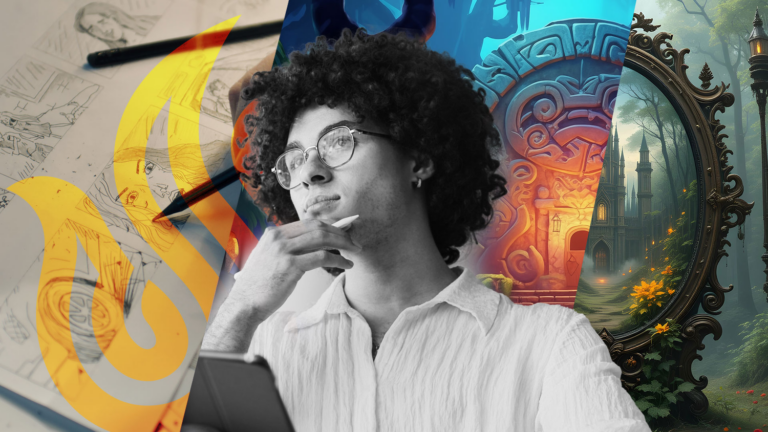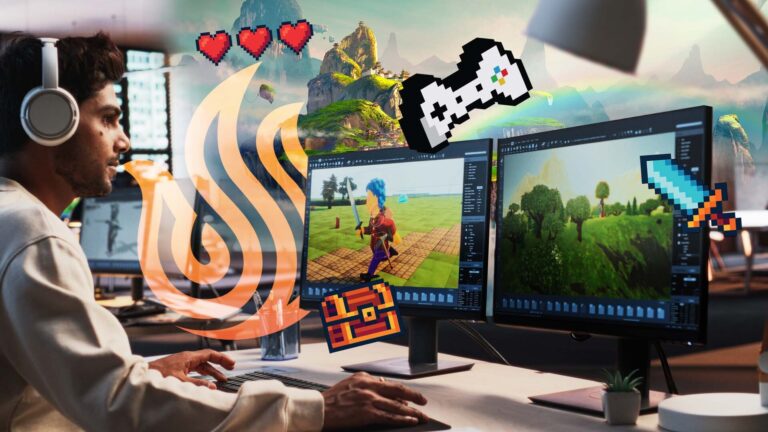Digital art and animation can be broken down into several key disciplines. Two of the most notable categories include 3D modelers and 3D animators. While both artists work closely with one another, the list of responsibilities is unique. If you are interested in becoming a digital artist and wish to know more about each discipline, then read on to learn what is the difference between 3D animation and 3D modeling.
What is 3D Animation?
Animation is the art and science of bringing digital creations to life. This is primarily achieved by creating believable movement for all the various interactions that explain the narrative. Keep in mind that narrative does not necessarily mean complex storytelling. Simple events such as a ball bouncing are crafted in the same way.
3D animators apply motion to characters and objects in a three-dimensional space. The added depth in each scene calls for slightly different tactics than traditional 2D art. Often, animators do not work on the 3D assets themselves. Rather, they create the frames necessary to convey the action on screen. 3D animators make the scene look appealing while in motion.
Then the 3D animators use character rigging. Character rigging involves simulating the inner body of any given creature in the scene. For instance, the standard human body is used as a template when creating digital people. This is vital for believability. The audience knows what it looks like when humans perform simple actions such as walking. To keep the illusion that makes entertainment possible, you must present believable animations that do not distract the viewers.
While simple human animations should not stand out, there is also the element of style to consider. Sometimes a fancy animation is just what is needed to revitalize interest in a story. Fantasy creatures, magic spells, and alien technology are all basic examples of opportunities to make animations flashy.
It is worth noting that 3D animation requires the use of specialized software for optimal results. You also need strong computer hardware to keep everything running smoothly.
What is 3D Modeling?
3D modeling involves the creation of the characters and objects in each digital scene. This includes sculpting each object by hand and applying details such as textures. 3D modelers also use advanced hardware and software. One key aspect of modeling is to make sure each asset fits in with the rest of the digital world. The art style and presentation of every object in a scene must reflect the dominant vision of the project. This means 3D modelers frequently refer to game design documents and other pre-production resources for guidance.
3D Modelers make the scene appealing when everything is still. They continuously add extra bells and whistles to a scene until it is time to publish. Once a scene is as good as it can be within the deadline given, 3D modelers complete their work by rendering the environment. Rendering is the process of finalizing the scene by ensuring all layers are compiled and the lighting is exactly right. Each project looks slightly different after it is rendered, so this process is always double-checked before a production gets published.
What is the Difference Between 3D Animation and 3D Modeling?
The main difference between 3D animation and 3D modeling is the set of skills required to be good at each one. For instance, an artist will study and utilize the twelve principles of animation to achieve believable and satisfying motion. Each of these twelve principles have been used by animators throughout history to create masterpieces. Concepts such as squashing and stretching provide context for how characters and objects move about a scene.
3D modelers get their skills from the traditional sculpting field. Solid forms are slowly chiseled away into the exact shape desired by the artist. The digital tools used to achieve this effect are mainly what modelers study. Once you master a modeling program, you can create intricate characters and scenes. The modeling team is often tasked with adding details such as textures and material shaders to each asset as well.
As a 3D modeler, you may be tasked with level design should you be hired to make a video game. This process is different than creating a traditional scene since the player must be subtly guided to their objective through environmental cues. In these instances, 3D modelers will also need to study what makes a video game level engaging. Level design cues include lighting, sounds, and angles give hints about what the player must do next.
How do 3D Animators and 3D Modelers Work together?
3D modelers create the assets that are then manipulated by animators. Both teams work closely with one another to ensure each animation lines up in the final product. In some cases, animators will discover that a model is not compatible with the motion to be conveyed. These assets are sent back to the modeling team for adjustments. A basic example of this is when a creature with numerous limbs appears on screen. Having each individual appendage move can often require some trial and error. Animators and modelers volley these problems back and forth until a solution is reached.
The setup for collaboration between animators and modelers depends entirely on the studio or production house. Every team has a slightly different strategy, so communication becomes important. Having clear communication and mediation skills is a requirement for digital art production. At the end of the day, everyone working on the project is striving for the best result possible. This means everyone occasionally steps in to fill other roles and plug any gaps in the development pipeline.
By this logic, it is important for 3D animators and 3D modelers to share some of the same skills. You will likely specialize in either discipline but dabbling in the other is crucial to keep development moving forward. If an animator is not available, a modeler might not want to wait to make an animation change. Instead, they can use their basic knowledge of key frames and other concepts to make the adjustments they need. The more autonomous each person on the team is, the smoother production will be.
It is also worth noting that 3D modelers and animators will also work closely with programmers. This is especially true in the case of video games in which everything is controlled with the underlying code. A basic example of this is a door that opens and closes when a button is pressed. The modeler creates the assets for the door and button. Animators apply motion to both objects. Finally, a programmer must code the interaction that causes the door to move when the button is pressed. In truth, digital worlds require many people collaborating simultaneously to keep the story moving forward.
How Do You Become a 3D Animator or 3D Modeler?
A straightforward way to becoming either a 3D modeler or 3D animator is to attend a formal education program. Creative arts colleges offer specific degree paths for each discipline. Courses walk you through each step of the software development process. Animators will get a chance to practice the twelve principles of animation. Modelers will get ample time to familiarize themselves with the advanced features in their software.
Working as a Team
At first you will learn about traditional art and why it has remained appealing throughout the generations. Then, you take that knowledge and apply it to a digital workflow. Many classes involve forming a team and creating your own small animation projects. Whether you are an animator or modeler, you will be placed on teams of fellow artists to practice your craft.
Portfolio Creation
Each project you complete in class serves as both wonderful experience and a potential portfolio piece. As a digital artist, one of your goals is to compile a collection of impressive works to show to potential employers or investors. This collection is known as your portfolio and is often a replacement for the resumes used in a typical job hunt.
Network with Instructors and Classmates
Your instructors are another valuable resource to consider. Each educator at a creative arts college has their name in the credits of published works. This means they know what they are talking about as they have been where you are trying to go. Considering that it may be difficult to find industry veterans in your daily life, a formal education program is the perfect chance to meet some. Not only can you learn from them, but you can also ask any additional questions that come to mind. Spending some time under a teacher’s wing will pay dividends.
In addition to instructors, networking with fellow students is just as important. Each classmate has a strong chance of becoming an industry professional . Connecting with them opens doors to many future opportunities in the world of entertainment. If they work at a studio, they can let you know about job openings. If you all decide to create your own indie studio, then you will have a balanced team with all the skills needed to succeed. You never know exactly what the future will hold, so be sure to keep as many doors open as possible .
Final Thoughts
Upon graduation, you have the skills, experience, confidence, and portfolio to land an entry-level job as a 3D animator or 3D modeler. A creative arts college like University of Silicon Valley has many connections to various animation houses and game studios. It is wise to take advantage of our network to get your career started on the right foot.
Want to Learn More?
If your passion is for visual effects, 2D or 3D animation, 3D modeling or concept art for video games or blockbuster films, this is the Digital Arts & Animation degree program for you. Gain the digital arts, modeling, and animation skills you need to kick off your career in this dynamic and growing industry.
University of Silicon Valley is uniquely poised to offer a meaningful and valuable education for 21st century students. We believe in an education that directly correlates with the work you’ll be doing after you graduate. Interested in learning more? Contact Us today.


